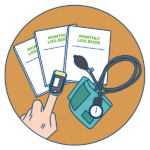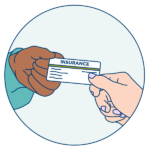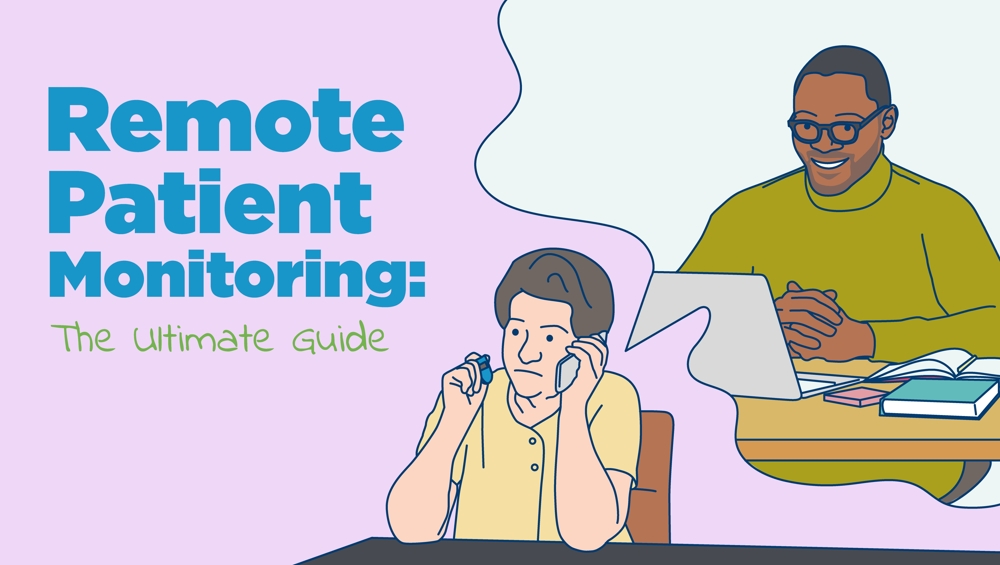
Remote Patient Monitoring: The Ultimate Guide
Welcome to “Remote Patient Monitoring: The Ultimate Guide!” In this comprehensive guide, we will delve into the world of remote patient monitoring (RPM) and explore the transformative impact it has had on healthcare delivery. As technology continues to advance at an unprecedented rate, the healthcare industry is undergoing a significant shift towards more patient-centric and accessible care, and remote patient monitoring is at the forefront of this revolution.
In recent years, remote patient monitoring has emerged as a game-changing solution that allows healthcare providers to remotely monitor patients’ health conditions, collect real-time data, and provide timely interventions. This innovative method has the potential to revolutionize healthcare by improving patient outcomes, enhancing care coordination, and reducing healthcare costs.
Whether you are a healthcare professional seeking to understand how RPM can enhance your practice, a patient curious about the benefits it can bring, or an entrepreneur looking to innovate in the healthcare space, this guide is designed to provide you with a comprehensive overview of remote patient monitoring in 2024 and beyond.
Explore the evolving landscape of remote patient monitoring with us. We’ll delve into its role in enhancing healthcare access, supporting patient empowerment, and refining care delivery. Let’s discuss the opportunities and challenges this technology presents and consider how it can contribute to a more patient-focused and accessible healthcare system.
Contents In This Guide:
What Does Remote Patient Monitoring Do?
Remote Patient Monitoring (RPM) is a healthcare practice that enables healthcare providers to monitor patients’ health conditions and vital signs remotely, using various technological devices and platforms. It involves the use of advanced sensors, wearables, mobile applications, and telecommunication technologies to collect and transmit real-time data from patients’ homes or other non-clinical settings to healthcare professionals.
The primary goal of remote patient monitoring is to enhance patient care, improve health outcomes, and increase access to healthcare services. By continuously monitoring patients outside of traditional healthcare settings, healthcare providers can gather valuable data on patients’ vital signs, symptoms, medication adherence, and overall health status. This data is transmitted securely to healthcare professionals, who can analyze it in real-time, make informed decisions, and provide timely interventions when necessary.
Some of the key functions and benefits of remote patient monitoring include:
- Continuous Health Monitoring: RPM allows for the continuous monitoring of patients’ vital signs, such as heart rate, blood pressure, glucose levels, oxygen saturation, and more. This helps detect any abnormalities or changes in health status promptly, enabling early intervention and prevention of complications.
- Chronic Disease Management: RPM is particularly effective in managing chronic conditions like diabetes, heart disease, hypertension, and respiratory disorders. It allows healthcare providers to closely monitor patients’ symptoms, medication adherence, and lifestyle factors, enabling personalized treatment plans and proactive care management.
- Timely Intervention and Reducing Hospitalizations: With real-time data transmission and remote monitoring, healthcare professionals can identify potential health issues or deteriorations early on. This enables timely intervention, adjustments in treatment plans, and preventive measures, thereby reducing hospital readmissions and emergency room visits.
- Patient Empowerment and Engagement: Remote patient monitoring promotes patient engagement and empowers individuals to take an active role in managing their health. By providing patients with access to their own health data, educational resources, and personalized feedback, RPM encourages self-care, adherence to treatment plans, and lifestyle modifications.
- Improved Care Coordination: RPM facilitates seamless communication and collaboration between patients, caregivers, and healthcare providers. It enables real-time data sharing, remote consultations, and care coordination across different healthcare settings, ensuring a holistic and integrated approach to patient care.
- Cost Savings and Efficiency: By remotely monitoring patients’ health conditions, RPM can potentially reduce healthcare costs associated with frequent hospital visits, unnecessary diagnostic tests, and emergency care. It optimizes resource allocation, streamlines workflows, and allows healthcare professionals to focus on patients who require immediate attention.
As technology continues to advance and healthcare systems evolve, remote patient monitoring is poised to play an increasingly vital role in delivering personalized, accessible, and patient-centered care. It has the potential to transform healthcare delivery, improve patient outcomes, and bridge the gaps in healthcare access, making it a significant area of interest for healthcare providers, patients, and innovators alike.
What is Needed for Remote Patient Monitoring?
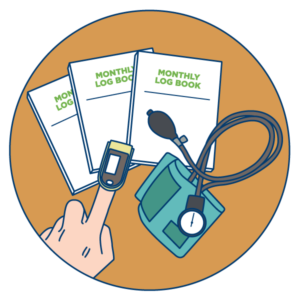
Remote Patient Monitoring requires a combination of essential components and technologies to enable effective monitoring and communication between healthcare providers and patients. Here are some key elements needed for remote patient monitoring:
- Monitoring Devices: RPM relies on various monitoring devices and sensors to collect and transmit patient data. These can include wearable devices such as smartwatches, fitness trackers, blood pressure monitors, glucometers, pulse oximeters, and more. These devices capture vital signs, activity levels, medication adherence, and other relevant health metrics.
- Connectivity and Communication: A reliable and secure communication infrastructure is crucial for RPM. This involves the use of internet connectivity, wireless networks, and cloud-based platforms to transmit patient data from the monitoring devices to healthcare providers. Secure communication channels, such as encrypted connections and virtual private networks (VPNs), ensure the privacy and confidentiality of patient information.
- Data Transmission and Storage: RPM requires mechanisms to transmit patient data in real-time or at regular intervals. This can be achieved through wireless technologies like Bluetooth, Wi-Fi, or cellular networks. RPM data can then be securely transmitted to patient care teams for trending & monitoring of patient data, and should also be made easily accessible to healthcare providers within their own electronic health records (EHR) system.
- Remote Monitoring Platforms: RPM data needs to be visualized, trended, and monitored by the patient’s care team. While this can be accomplished leveraging external remote monitoring platforms, integration with the healthcare provider’s EHR is required to ensure effective communication and coordination with the patient’s provider and/or care team.
- Dedicated Care Management Resources: To be successful, RPM requires multiple healthcare professionals collaborating to provide comprehensive care. RPM inherently requires initiative from the patient to consistently take readings using the RPM device(s), and most patients enrolled in an RPM will stop using their device(s) over time if they are not engaged longitudinally with dedicated nurse care management resources. Additionally, care management resources should always be connected directly to, and coordinating directly with the patient’s primary care physician on any required interventions.
- Regulatory Compliance and Security Measures: Compliance with healthcare regulations, such as the Health Insurance Portability and Accountability Act (HIPAA) in the United States, is essential for protecting patient privacy and data security. RPM solutions should implement robust security measures, encryption protocols, access controls, and regular audits to safeguard patient information.
- Training and Support: Effective implementation of RPM requires adequate training for both healthcare providers and patients. Training programs should educate healthcare professionals on how to interpret and utilize patient data effectively. Patients need guidance on device usage, data sharing, and understanding the significance of their health metrics. Ongoing technical support and troubleshooting are also crucial to address any issues that may arise during RPM implementation.
By integrating these elements into a comprehensive remote patient monitoring system, healthcare providers can effectively monitor patients’ health remotely, improve care coordination, and enhance patient outcomes. It is important to adapt RPM solutions to specific healthcare settings and patient populations to maximize its benefits.
Does Insurance Cover Remote Patient Monitoring?
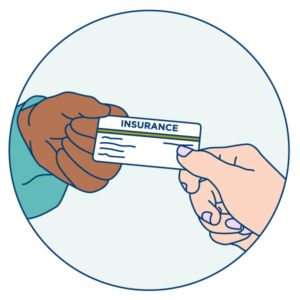
Insurance coverage for remote patient monitoring varies depending on the specific insurance provider, the type of plan, and the jurisdiction. In recent years, there has been an increasing recognition of the value and potential cost savings associated with RPM, leading to expanded insurance coverage for these services. However, it is important to check with individual insurance providers to determine the extent of coverage for RPM.
Here are some key points to consider regarding insurance coverage for RPM:
- Medicare Coverage: In the United States, Medicare has expanded its coverage for RPM services in certain circumstances. Medicare reimbursements for Remote Patient Monitoring includes certain chronic conditions, including heart failure, diabetes, and chronic obstructive pulmonary disease (COPD). Under Medicare, patients must meet specific eligibility criteria, and the RPM services must be provided by eligible healthcare professionals and meet specific billing requirements.
- Private Insurance Coverage: Many private insurance providers have recognized the benefits of RPM and offer coverage for these services. Coverage may vary among different insurance plans and providers. Some insurance companies may cover RPM for certain conditions, while others may have specific requirements or limitations. It is advisable to review individual insurance policies or contact the insurance provider directly to understand the extent of RPM coverage.
- Medicaid Coverage: Medicaid, the government health insurance program for low-income individuals and families, also provides coverage for RPM in some states. Coverage criteria and reimbursement processes may vary by state. Medicaid recipients should consult their state Medicaid program or contact their healthcare provider to determine if RPM services are covered.
- Reimbursement Models: Insurance coverage for RPM may involve different reimbursement models. Some insurance plans may reimburse healthcare providers for the time spent reviewing and analyzing patient data collected through RPM. Others may reimburse based on specific CPT (Current Procedural Terminology) codes or bundled payment models. Understanding the reimbursement models applicable to RPM services is important for healthcare providers seeking reimbursement for these services.
- Policy Changes and Updates: Insurance coverage for RPM is subject to policy changes and updates. As the healthcare landscape evolves and the benefits of RPM become more widely recognized, insurance providers may expand their coverage for these services. Staying informed about policy changes and updates can help determine the availability of coverage for RPM.
It is crucial to consult with insurance providers directly or work with healthcare professionals familiar with the insurance landscape to understand the specific coverage options and requirements for remote patient monitoring. They can provide detailed information based on the individual’s insurance plan and local regulations.
How Much Does Remote Patient Monitoring Cost?

The cost of remote patient monitoring can vary depending on several factors, including the specific RPM solution, the healthcare provider, the type of monitoring required, and the geographical location. It is important to note that the costs associated with RPM can be incurred by various parties involved, including healthcare providers, insurance companies, and patients.
Here are some key factors that contribute to the overall cost of remote patient monitoring:
- RPM Technology and Devices: The cost of RPM technology and devices can vary widely depending on the type and complexity of monitoring required. This includes the cost of wearable devices, sensors, monitoring equipment, and related software. The prices can range from relatively affordable consumer-grade devices to more advanced medical-grade monitoring equipment.
- Software and Platform Costs: When relying on external software platforms or applications that enable data collection, transmission, and analysis,cost of these platforms can vary depending on factors such as licensing fees, implementation, customization, and ongoing maintenance. Some platforms may charge a subscription fee or a per-patient fee based on the number of individuals being monitored. All of these costs combined may make it challenging to implement an RPM program profitably.
- Data Transmission and Storage: RPM involves transmitting and storing patient data securely. The cost of data transmission can depend on factors such as the volume of data, the type of connectivity required (e.g., cellular networks, Wi-Fi), and any associated data charges. Cloud-based storage solutions may have associated costs based on data storage capacity and usage.
- Integration with Existing Systems: Integrating RPM solutions with existing electronic health record (EHR) systems or healthcare infrastructure may require additional costs. This can involve customization, technical support, and compatibility assessments to ensure seamless data exchange and integration.
- Professional Services: Most healthcare providers do not have spare clinical capacity on hand and may require additional resources or staffing to implement and manage RPM programs effectively. This can involve training for healthcare professionals, technical support, and dedicated personnel for monitoring and reviewing patient data. These professional services can contribute to the overall cost of RPM implementation and management.
- Reimbursement and Insurance Coverage: The availability and extent of insurance coverage for RPM can impact the cost for patients. Patients’ out-of-pocket costs, including copayments or deductibles, may vary based on insurance plans and coverage for RPM services. Healthcare providers may also need to consider reimbursement processes and potential administrative costs associated with billing for RPM services.
It is important to note that while there may be initial costs associated with implementing RPM, the long-term benefits can potentially outweigh the upfront investment. RPM has the potential to reduce healthcare costs by preventing complications, reducing hospitalizations, and improving overall patient outcomes.
The specific cost of remote patient monitoring can vary significantly, and it is advisable to consult with healthcare providers, technology vendors, or insurance companies to get accurate and up-to-date information on the costs associated with RPM in a given context.
Who is Eligible for RPM?

Remote patient monitoring is a versatile approach that can benefit a wide range of individuals with various healthcare needs. The eligibility for RPM can depend on several factors, including the specific healthcare condition, the goals of monitoring, and the healthcare provider’s discretion. Here are some general categories of individuals who may be eligible for remote patient monitoring:
- Chronic Disease Patients: RPM is often utilized for individuals with chronic diseases such as diabetes, heart disease, hypertension, chronic obstructive pulmonary disease (COPD), and kidney disease. These individuals can benefit from continuous monitoring of vital signs, medication adherence, symptoms, and lifestyle factors to manage their condition effectively.
- Postoperative or Recovery Patients: Patients who have undergone surgery or are in the recovery phase can be eligible for RPM. Monitoring their vital signs, pain levels, wound healing, and overall progress remotely can help healthcare providers ensure proper recovery and identify potential complications early on.
- Elderly or Aging Population: RPM can be particularly beneficial for older adults or the aging population who may have multiple chronic conditions or may be at higher risk for falls, cognitive decline, or medication management issues. Remote monitoring enables healthcare providers to closely monitor their health status, intervene as needed, and provide appropriate care.
- Individuals with Limited Mobility: Individuals with limited mobility, such as those with physical disabilities or those living in remote areas, can greatly benefit from RPM. By eliminating the need for frequent in-person visits, RPM enables healthcare providers to monitor their health status, provide remote consultations, and improve access to care.
- High-Risk Patients: Patients at high risk of developing complications or those who require frequent monitoring due to specific healthcare needs may be eligible for RPM. This can include individuals with high blood pressure, unstable cardiac conditions, gestational diabetes, or those undergoing certain treatments like chemotherapy.
- Post-Discharge or Transitional Care Patients: RPM can support individuals transitioning from hospital to home or undergoing rehabilitation. Monitoring vital signs, medication adherence, and adherence to care plans remotely can help prevent readmissions and ensure continuity of care.
It is important to note that eligibility for RPM may also depend on local regulations, insurance coverage, and the healthcare provider’s assessment of the individual’s specific needs. Healthcare professionals evaluate patient eligibility based on medical history, condition severity, the potential for improved outcomes, and the feasibility of remote monitoring for a particular patient.
Ultimately, RPM aims to enhance patient care, improve outcomes, and increase accessibility to healthcare services. Consulting with healthcare providers or care teams can help determine individual eligibility for remote patient monitoring and the specific benefits it can offer in a given healthcare context.
What are the Rules of RPM?
 Remote patient monitoring practices are governed by various rules and regulations, which can vary depending on the jurisdiction and specific healthcare system. It is important to note that the following information provides a general overview and should not be considered legal advice. Healthcare providers and organizations should consult with legal experts and relevant regulatory authorities to ensure compliance with the specific rules and regulations applicable to their practice. Here are some common considerations in RPM:
Remote patient monitoring practices are governed by various rules and regulations, which can vary depending on the jurisdiction and specific healthcare system. It is important to note that the following information provides a general overview and should not be considered legal advice. Healthcare providers and organizations should consult with legal experts and relevant regulatory authorities to ensure compliance with the specific rules and regulations applicable to their practice. Here are some common considerations in RPM:
- Privacy and Security: RPM involves the collection and transmission of sensitive patient health data. Healthcare providers must comply with applicable privacy and security regulations, such as the Health Insurance Portability and Accountability Act (HIPAA) in the United States. This includes ensuring patient data confidentiality, implementing appropriate security measures, obtaining patient consent, and properly storing and transmitting data securely.
- Consent and Patient Rights: Patients must provide informed consent before participating in RPM programs. They should be educated about the purpose, benefits, and any applicable costs.
- Licensing and Credentialing: Healthcare professionals involved in RPM must comply with licensing and credentialing requirements specific to their jurisdiction. This includes ensuring that practitioners providing remote care are authorized to practice and meet the necessary qualifications, such as physicians, nurses, or other healthcare professionals.
- Reimbursement and Billing: Healthcare providers must understand the reimbursement rules and requirements associated with RPM services. This includes coding and billing guidelines specific to remote monitoring, such as Current Procedural Terminology (CPT) codes or other billing mechanisms. Familiarity with the reimbursement policies of insurance providers, Medicare, Medicaid, or other payers is crucial for accurate and compliant billing.
- Jurisdictional Regulations: RPM practices may be subject to additional regulations and requirements at the jurisdictional level. These can include state or regional laws, guidelines from regulatory bodies, or local healthcare authority mandates. Healthcare providers should be aware of and comply with any jurisdiction-specific regulations governing RPM services.
- Monitoring Quality and Clinical Guidelines: Healthcare providers should establish clear protocols, guidelines, and quality assurance measures for RPM. This includes defining thresholds for abnormal data, determining appropriate response times, and ensuring proper follow-up care. Compliance with clinical guidelines and best practices specific to the condition being monitored is essential to deliver effective remote care.
It is crucial for healthcare providers to stay updated on evolving rules and regulations related to RPM. Engaging legal counsel, consulting regulatory authorities, and participating in professional networks and organizations can help healthcare providers navigate the regulatory landscape and ensure compliant and high-quality remote patient monitoring practices.
Tying it All Together
Remote patient monitoring has emerged as a transformative approach to healthcare, revolutionizing the way patients are monitored and cared for. By leveraging advanced technologies, RPM enables healthcare providers to remotely monitor and manage patients’ health conditions, enhancing accessibility, improving outcomes, and reducing healthcare costs.
Throughout this guide, we have explored the key aspects of remote patient monitoring, starting with its definition and the benefits it offers to both patients and healthcare providers. We delved into the necessary components and technologies required for effective RPM implementation, including monitoring devices, connectivity, data transmission, and secure platforms. Additionally, we discussed the importance of patient engagement tools, care team collaboration, regulatory compliance, and the need for proper training and support.
We also examined the factors influencing insurance coverage for RPM, recognizing the evolving landscape of reimbursement policies. While coverage may vary, there is a growing recognition of the value of RPM, and insurance providers are increasingly extending coverage for these services.
Considering the cost of RPM, we highlighted that it can vary depending on factors such as technology, software, data transmission, and professional services. While there may be initial investments, the long-term benefits of RPM, including improved patient outcomes, reduced hospitalizations, and enhanced care coordination, can outweigh the costs.
Determining eligibility for RPM involves considering various factors, such as chronic diseases, postoperative or recovery needs, limited mobility, mental health conditions, and the aging population. The specific eligibility criteria can vary based on the healthcare provider’s assessment, local regulations, and the goals of monitoring.
Lastly, we emphasized the importance of adhering to rules and regulations governing RPM, such as privacy and security requirements, consent and patient rights, licensing and credentialing, reimbursement guidelines, and adherence to standards and clinical guidelines. Compliance with these regulations ensures the ethical and responsible implementation of RPM and protects patient privacy and data security.
As remote patient monitoring continues to advance, it holds tremendous potential for transforming healthcare delivery, promoting patient-centered care, and bridging the gap between patients and providers. By harnessing the power of technology, remote patient monitoring is paving the way for a more connected, accessible, and efficient healthcare system.
We hope that this guide has provided you with a comprehensive understanding of remote patient monitoring, its benefits, requirements, and considerations. By leveraging this knowledge, healthcare providers and organizations can embrace RPM as a valuable tool in delivering high-quality care and improving patient outcomes. At Signallamp we specialize in Remote Patient Monitoring set up for major health organizations. Schedule a quick 30-minute consultation today to learn more!


